Overview day 538 - 580
23 April 2024 - 4 June 2024
1973
Km’s Cycled
22310
Altimeters
34
Stages
1
Defects

Japan
Temple 88
The smell of incense greets us, just like at the previous 87 temples. We are here. Temple 88 is the last temple of the Shikoku Henro. We have developed our own rituals. We bow slightly out of respect before entering the temple grounds and quietly walk our rounds. Looking for beautiful statues, footprints of Buddha and the strangest symbols. Oranges with a face, statues of an eggplant, knitted hats and bibs for the statues, there is often all kinds of interesting things to be found. The temples all look broadly similar. It is usually an area of 100 by 100 meters with a number of buildings. The main temple, the Daishido temple, sometimes a place where the monks can stay and an office. There is always a peacefull athmosphere, people talk in hushed tones, occasionally we hear the bell ringing, birds chirping and the mumbling of mantras, sometimes recited simultaneously by large groups of pilgrims. In that case, a tambourine sets the beat. It has a soothing effect.
The last temple
After our round we get our last “stamp”. We have a book where we have now collected evidence of all 88 temples that we have visited. Nirvana awaits us, if the legends are to be believed. In the office, a beautiful calligraphy is placed by hand over some stamps. So “stamp” is a bit too simple for such a special craft. The book is full, the pilgrimage complete. And now?
In recent weeks we have often mentally traveled back and forth to the Netherlands. Job applications, moving, housewarming, scheduling a dentist appointment, seeing family again, planning Isabelle’s birthday, we’ve been busy. But because we have already arranged all that, we can soon start everything at home relatively relaxed. Most of the important stuff has been arranged.
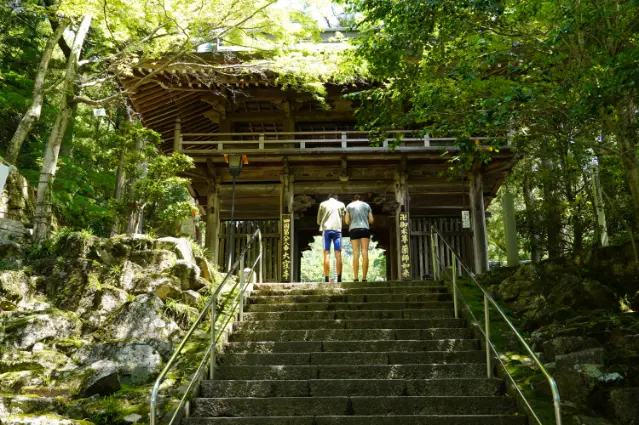
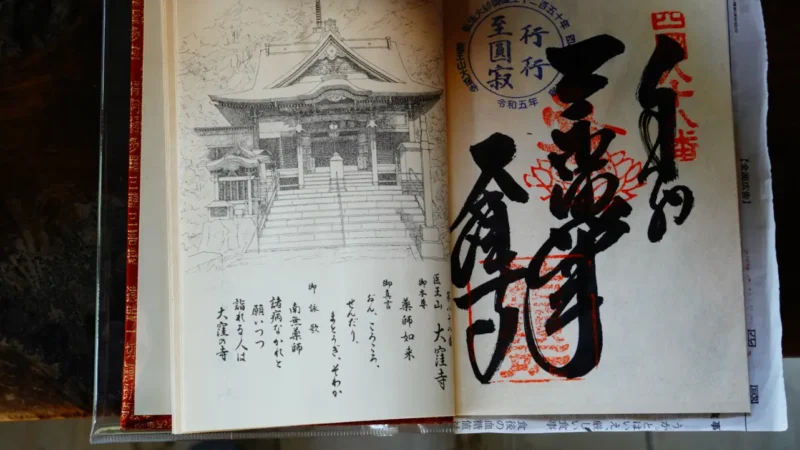
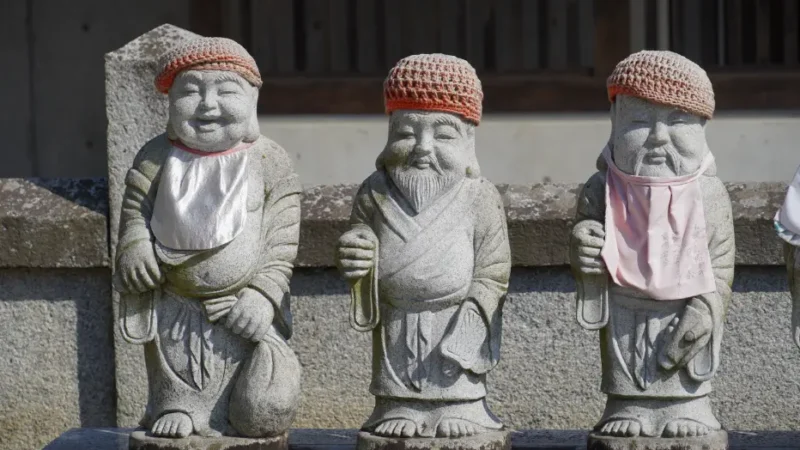
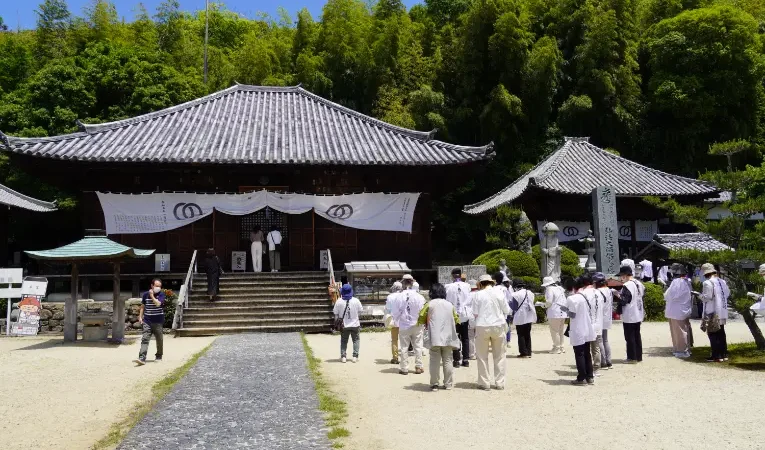
We can go home
But now, at this moment, we are standing at temple 88. Our journey is really coming to an end. So far, all our endings have been just the beginning of the next stage. From Santiago de Compostela we cycled to Malaga, then to Morocco, then Italy, Southeast Asia, China. Each time, the next “ending” had been planned for a long time. But not now. It’s really over. Done, that’s it, end, finish, no sequel. We are going home.
But of course we didn’t come here by chance. This time a slightly longer blog, so sit back and enjoy it. Have fun reading.
The boat to Japan
From Busan (South Korea) we take the boat to Osaka (Japan). It’s another overnight trip and this time we buy vouchers for dinner and breakfast in advance. Good food works wonders. However, for the first few hours we sail over rough seas. The boat bobs nicely on the waves and Rob’s stomach doesn’t like that. He looks greener and greener and the food is not helping. A small dinner is forcibly stuffed inside hist stomach and it barely stays inside. Fortunately, Isabelle is not bothered by anything and she is able to enjoy dinner for both of us. After a few hours of seasickness we sail past the islands of Japan and the sea is a lot calmer. Rob’s stomach calms down as well and his cheeks regain their normal color. So we can both enjoy breakfast!
Osaka
At immigration our bags are completely turned upside down. Every stitch is carefully checked. Fine for us, we have nothing to hide. But we are immediately exposed to the Japanese rules and how well they adhere to them. Outside the port we notice the small cars. They remind us most of Lego blocks on wheels with a tiny nose on the front. Small cars are also necessary here, because the streets are very narrow. The second thing we notice is the politeness. Everywhere you are warmly welcomed, people bow very respectfully and when you leave a store or restaurant you are thanked very much for coming. To be honest, we get a bit bored with that after a while. Even the stockers at the supermarket stop their work to say hi and bow to you. Not necessary. And everything happens so automatically that it doesn’t seem sincere anymore, it’s as if a taperecord is being played.
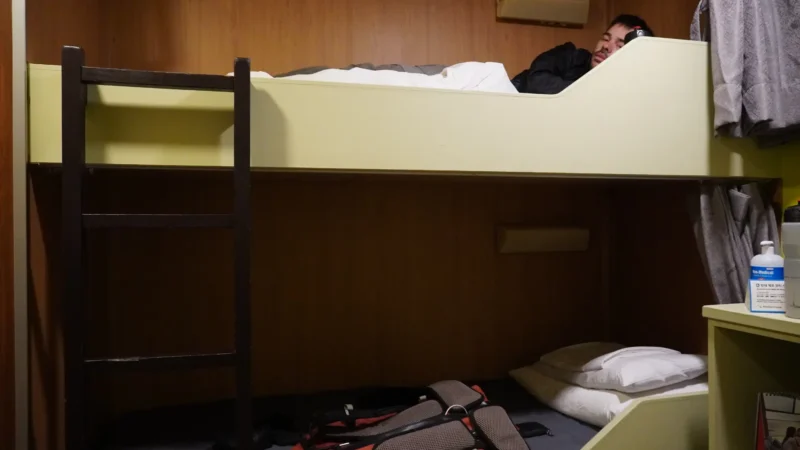
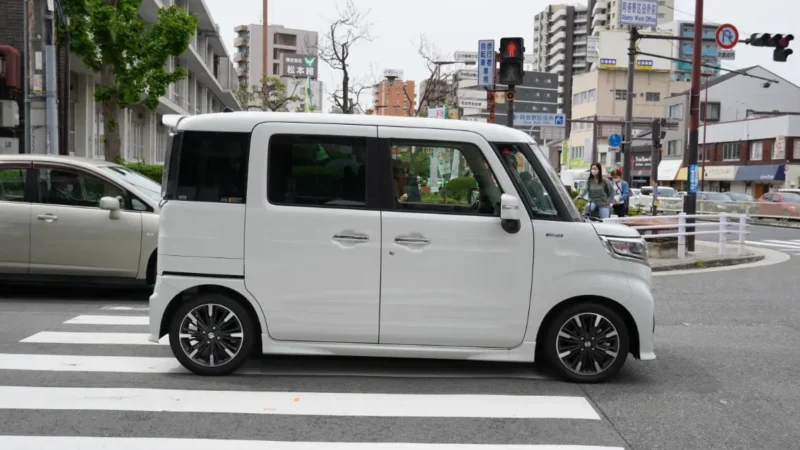
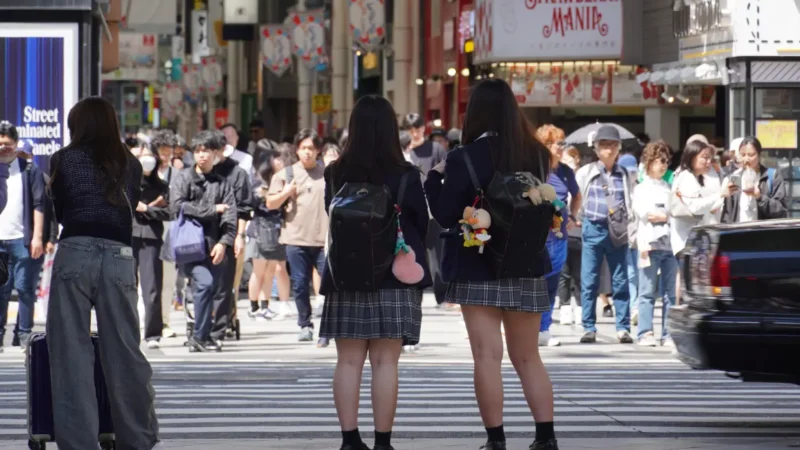
Shikoku Henro
Osaka is a mega city where we have no business being. We do our shopping, arrange SIM cards and then we leave for Shikoku, the smallest of Japan’s four largest islands. There is a pilgrimage route around Shikoku that passes 88 temples and at all temples you “get” proof of your visit by means of a stamp that, in our case, you have put in a book. “Get” in quotes because of course you have to pay for it. Some choose to have the stamps placed on a cloth or on a scroll. In addition, as a pilgrim you can buy all kinds of other symbols and items of clothing so that you are recognized. White pants and vest, a hat, a walking stick, candles, incense sticks, bracelets, necklaces, you name it. Everything has its own meaning and symbolism.
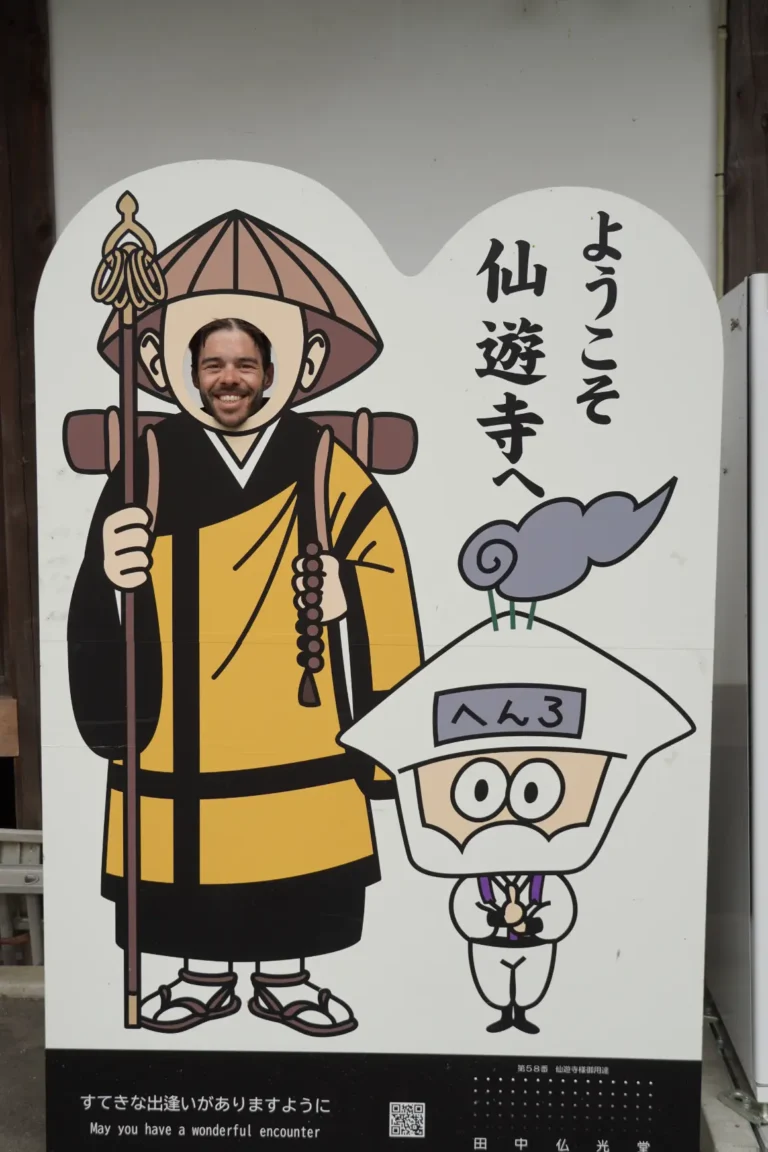
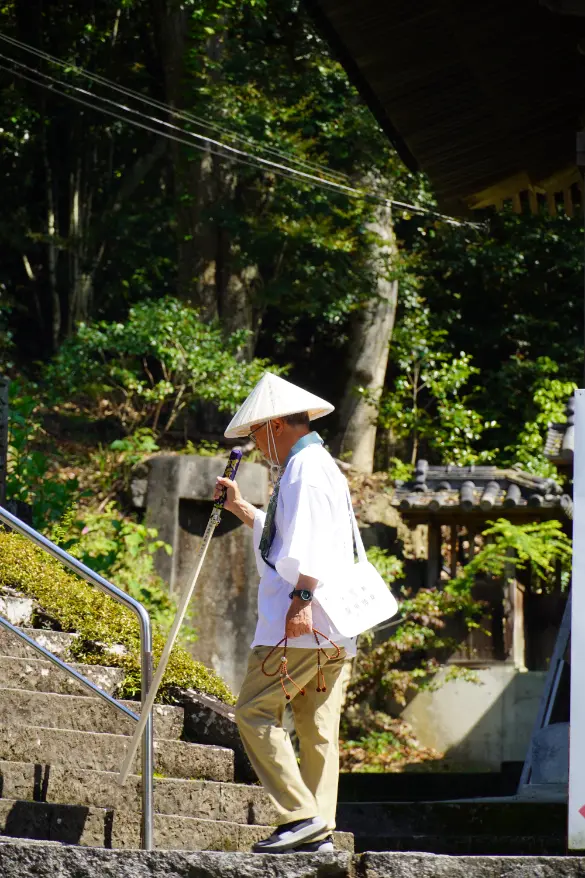
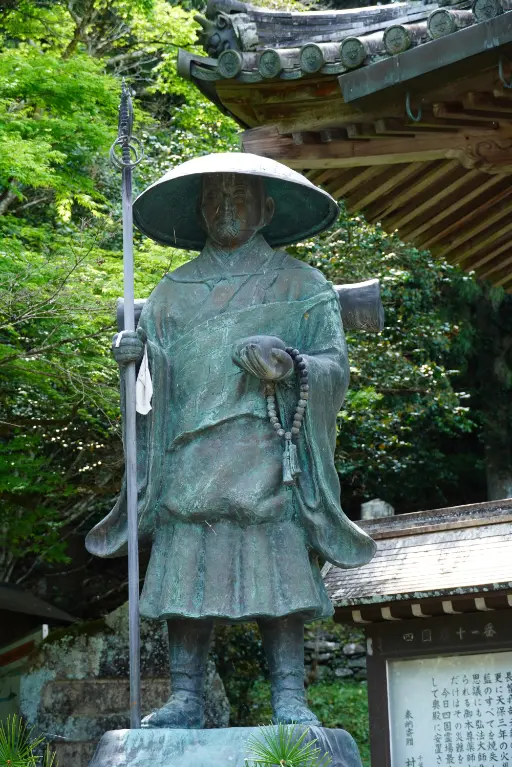
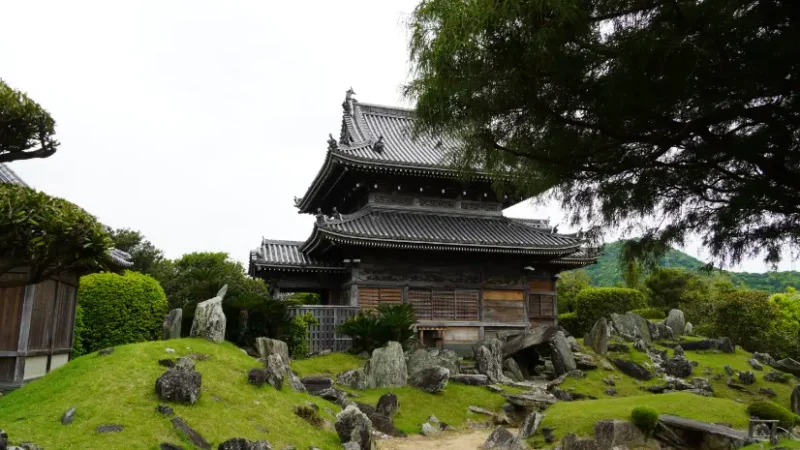
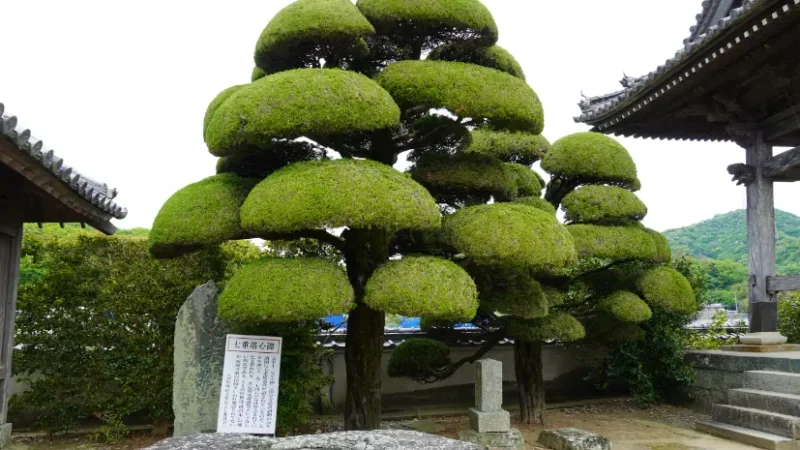

Shikoku Pelgrimige
A little bit of background information. Henro is the Japanese word for pilgrim. That’s why the Shikoku pilgrimage is also known as the Shikoku Henro. As mentioned, the route passes 88 temples through the four different provinces of Shikoku. Why 88 temples? No one actually knows. There are several theories, but which one is true remains a matter of speculation. The pilgrimage is traced back to a man named Kukai, also known as Kobo Dashi. He is the man who brought a certain movement of Buddhism to Japan that is still very popular today. Kobo Dashi is the central figure during this journey. Kobo Dashi himself never visited all 88 temples and he never walked or devised this tour himself. This was done by his students and only after the death of Kobo Dashi. Thanks to Kobo Dashi, many temples were built as Buddhism became increasingly popular in Japan.
Stamps
Back in the day, around the 9th century, something first began to resemble an official pilgrimage route. More and more people started visiting the temples on Shikoku because Kobo Dashi was born on Shikoku. However, there were enormous restrictions on traveling at that time. There were guards on the main roads and if you did not have a valid reason for traveling you risked being punished. This is how the stamping at the temples started. With the stamps in your pocket you could prove that you were on your way as a pilgrim and that was seen as a valid reason to travel through Shikoku. Nowadays you can travel through Shikoku a lot more freely and the stamps are no longer necessary. But traditionally you can still get them at any temple.
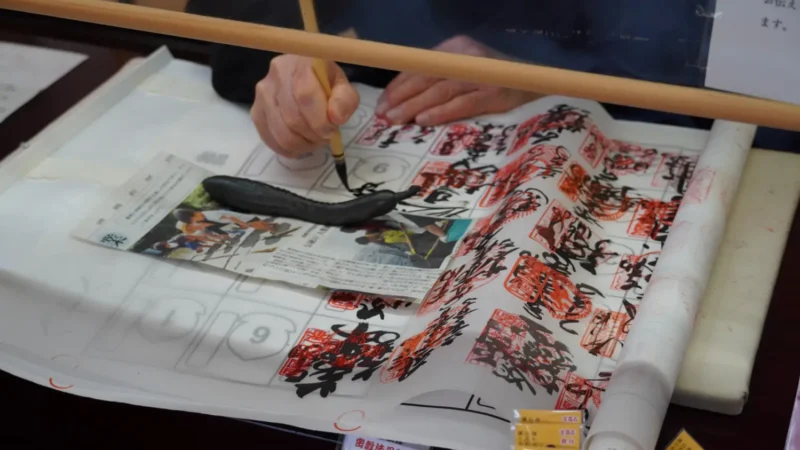

Nirvana
The 4 provinces of Shikoku divide the route into 4 parts. “awakening”, “auterity and discipline”, “enlightment” and the last one: “entering nirvana”. When you have visited all the temples you would reach Nirvana. That is why the route is immensely popular with many Japanese Buddhists. On foot, by bike, by motorcycle, car or bus, it doesn’t matter. For many Japanese it is a must to make this journey at least once in their lives and when they die they take the stamps with them to the grave.
Pilgrims
We buy a book to collect our stamps. All those other symbols and accessories don’t mean much to us and would be especially inconvenient on a bicycle. We have doubts, but along the way there will be plenty of opportunities to purchase attributes, should we feel the need. But the longer we are on the road, the less we feel the need. By far the most “pilgrims” we encounter come by car and we see a large number of them dressing up in the parking lot. The attributes are put on, Kobe Dashi (the walking stick) is taken from the trunk and the last meters from the parking lot to the temple are then covered as a “pilgrim”. Of course there are no rules, everyone makes this journey in their own way and there is nothing wrong with that. But for us, the symbolism disappears when you are changing clothes in the parking lot.
Can you buy Nirvana?
We also see plenty of hikers along the way who complete all, or part of the journey on foot. In that case, the clothing retains the symbolism and you are recognizable as a pilgrim. But when you remove the spiritual charge from such a journey by putting on your pilgrim outfit at the last minute on the parking lot, you are left, at least for us, with little more than a commercial tour. Sometimes with busloads at a time. The entire outfit together costs more than 100 euros, a book about 20, lighting a candle everywhere, incense sticks, special name slips, donations at every temple, your mantra booklet, a stamp in a book costs about 3 euros. On a scroll, more than double. And everything times 88. Nirvana is for sale. If you want you can even buy your happiness. Good luck for your exams, good luck for the toilet, good luck for driving, you name it, you can buy it at the temples.
Namste
But perhaps we simply see it too simplistic or practical. Because for the Japanese and other Buddhists around the world it remains an important journey. And who are we to judge that? It is also very nice that people who have difficulty walking, or who are simply very old, have the opportunity to do the pilgrimage at all. We therefore respect all pilgrims. Namaste.
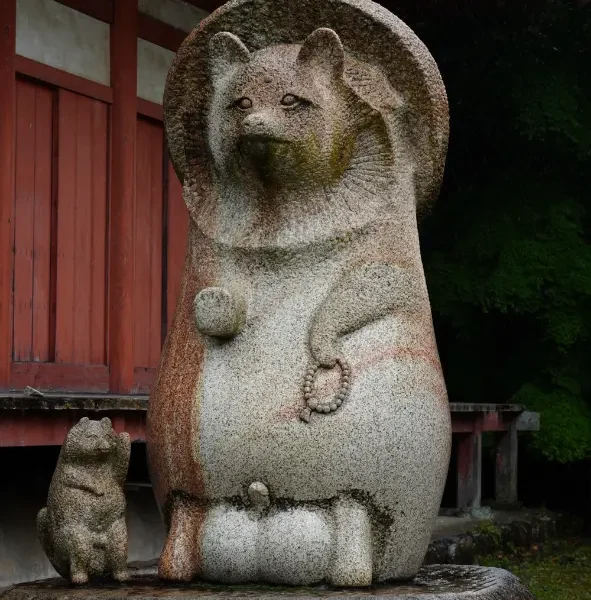
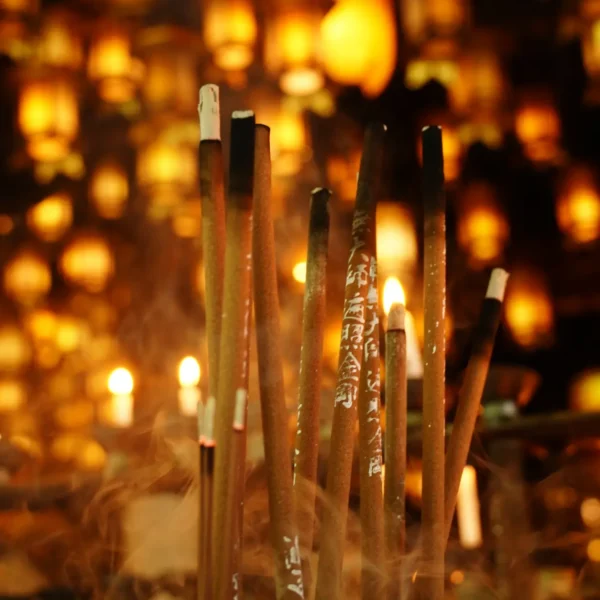

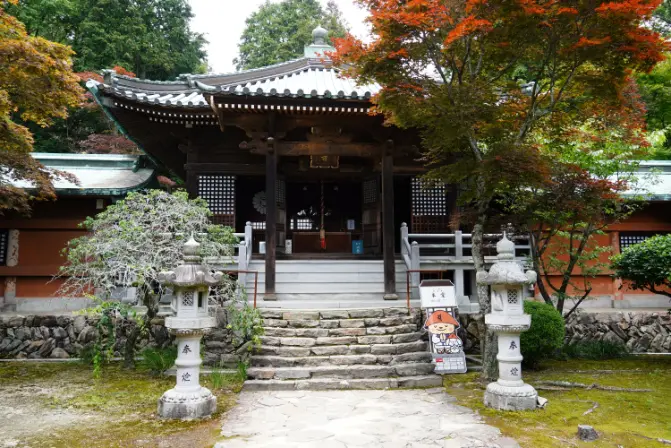

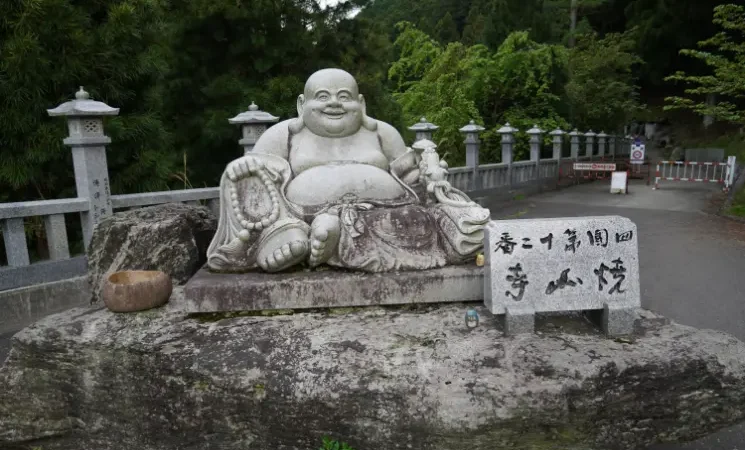
Nature and weather
Good. Enough nonsense about pilgrims and Buddhism. Because our reason for this route is actually very simple. We still have about 6 weeks to go and with this route we fill up the time perfectly. We still have to arrange a few things for home and then it’s just nice to not have to think about where we want to go every day. So it takes away some of the thinking and planning. We cycle from temple to temple and the route is therefore fairly fixed.
And what a route. Shikoku is a relatively large island with relatively few inhabitants. So there is room left for nature. We generally have fantastic weather and everything around us is lush green. When we are further from the cities, it lives around us. First of all, there are a lot of bees, hornets, dragonflies, moths, butterflies, grasshoppers and other insects flying around. We see many snakes (unfortunately most of them are run over by cars), large worms of 50cm long, spiders, crabs and centipedes. In addition to those creepy crawlers, we see many different birds, many turtles and fish, once we see a Japanese raccoon dog running, a deer, flying squirrels and occasionally we see monkeys darting away.
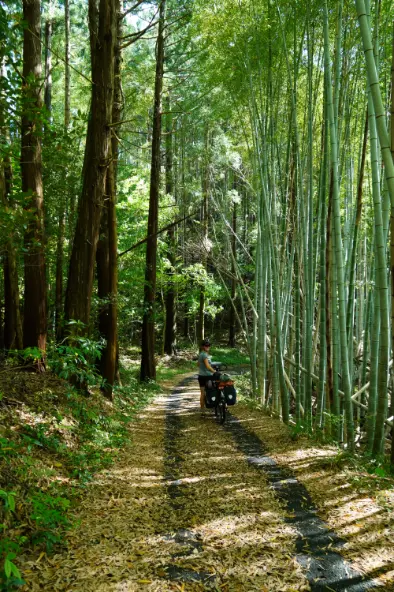
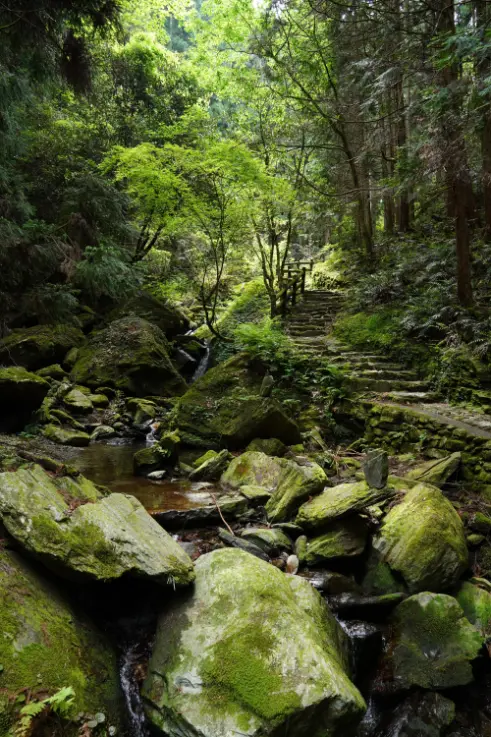

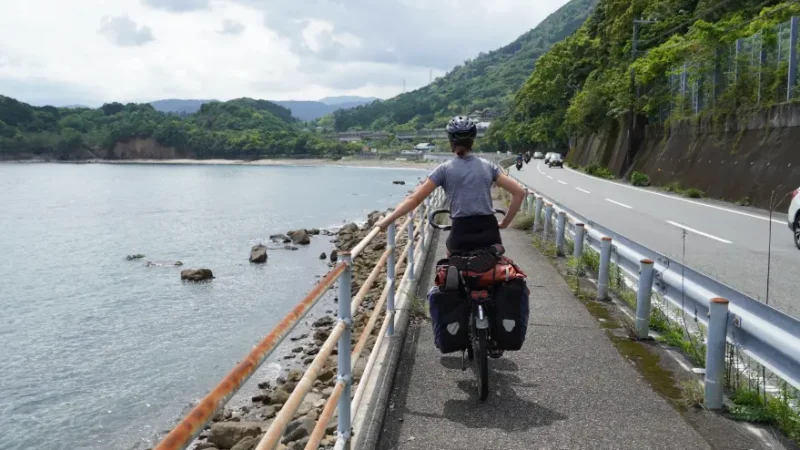
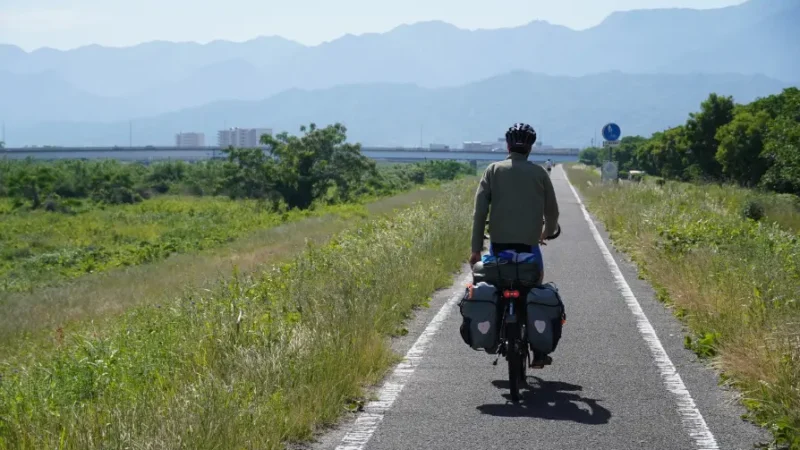
a special and beautiful mix
The route along the coast takes us to beautiful bays that could easily be the set of Pirates of the Caribbean. Rocky walls with beautiful white sandy beaches and a clear blue sea. It feels like we’re cycling on a tropical island. The interior is mountainous, but again the mountains do not disappoint us. The views are amazing! Imagine countless mountain rivers flowing crystal clear and calmly through the mountains. What a joy!
In that respect, Japan is a real mix of natural beauty. The tropical sea of Thailand mixed with the Austrian Alps, the jungles of Laos and the pine forests of Finland. It happens more than once that we look around in amazement and in one field of view see lianas hanging in the pine trees, different types of deciduous trees and ferns growing and topped off with here and there a huge forest of bamboo with bamboo stems as thick as tree trunks.
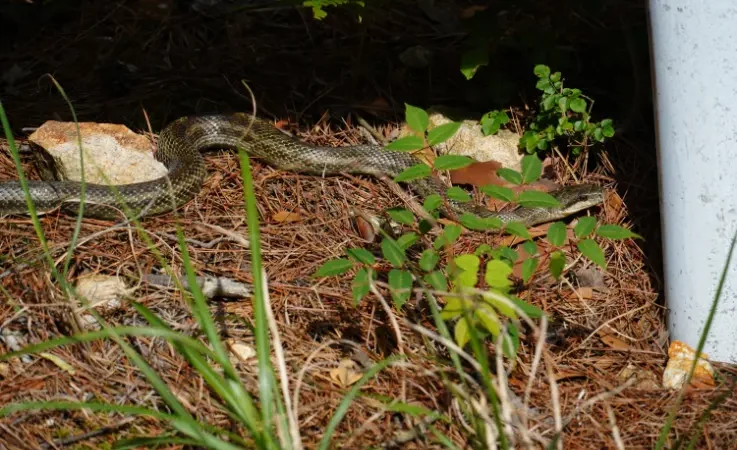

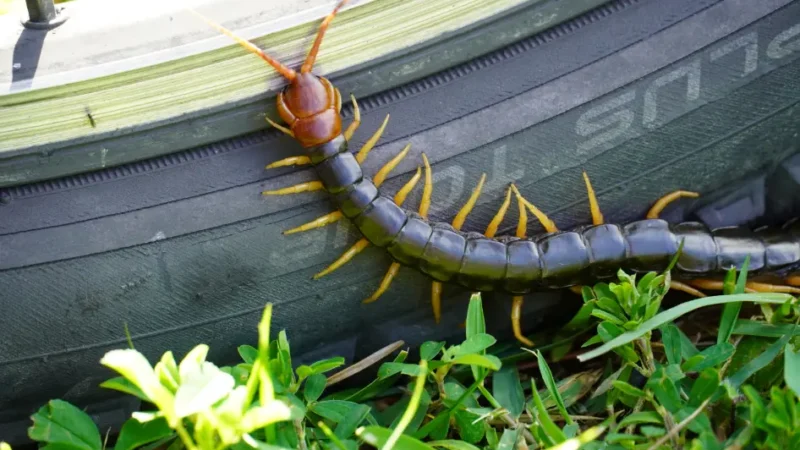

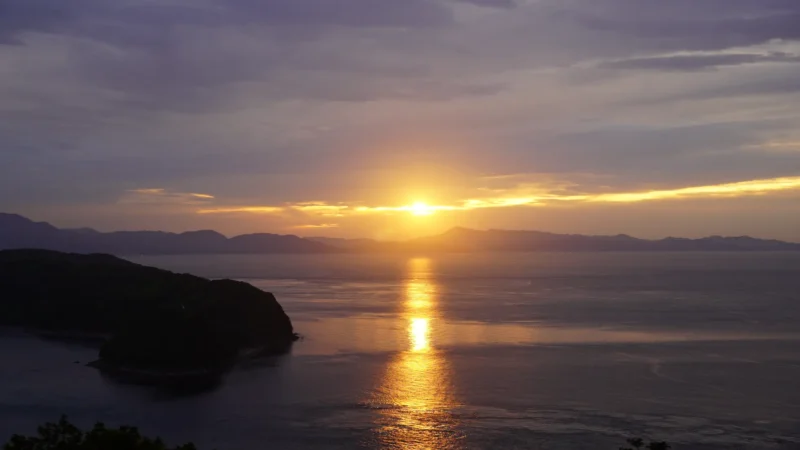
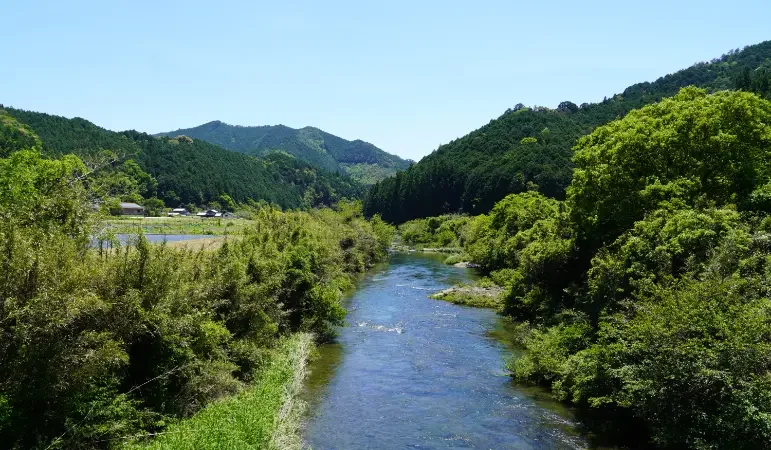
Rain
We have beautiful weather in Japan. It is usually between 20 and 25 degrees celcius during the day and at night it cools down nicely so we sleep wonderfully in our tent. Nice weather every day, except on Sundays. The first 3 weeks it rains every Sunday. And how. They don’t have drizzly showers here, no, when it rains, it pours! We ensure that our tent is placed in a high, dry place and on those days we escape to the onsen (the Japanese sauna/bathhouses). No matter how shy most Japanese are, everyone walks around the onsen shamelessly naked. Men and women are separated, but otherwise the onsen is a place for all levels of society. It is very common to go to the sauna and it is therefore widely used. It is therefore not expensive and you can stay as long as you want. For us, a very welcome change from the “showers” we usually have in Japan. Most campsites where we stay are free or we do wild camping. Toilets and drinking water are actually always available, but no showers. If there is no tap we can fit under, we rely on a garden hose or we “shower” under our water bottles.
The water bottle shower
It may sound Spartan, but we feel great about it. Just that moment at the end of the day, throw a few bottles of water over your body and then put on clean clothes. Cook dinner, do the dishes, brush your teeth and when the sun has set, go into the tent around 7:30 PM. We read a lot and sleep early. We never set an alarm clock. We wake up when the sun rises again around 6:00 am. Ready for a new day on the bike.
But in the onsen we scrub ourselves squeaky clean. Ready for another week on the bike. It may rain again on Sunday as far as we are concerned.
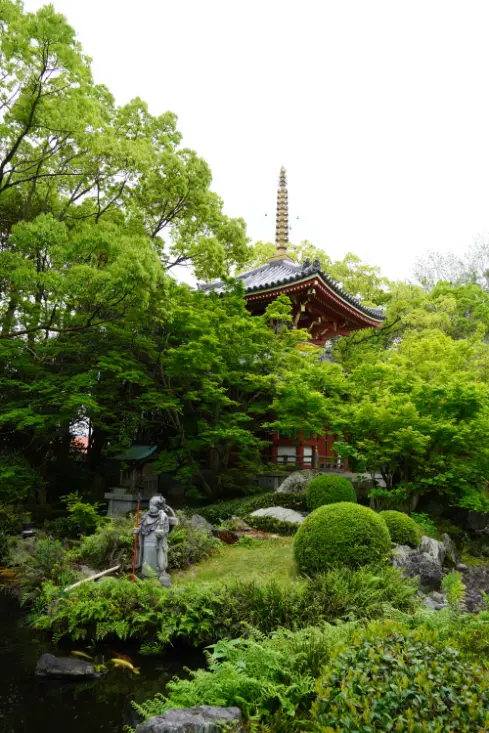
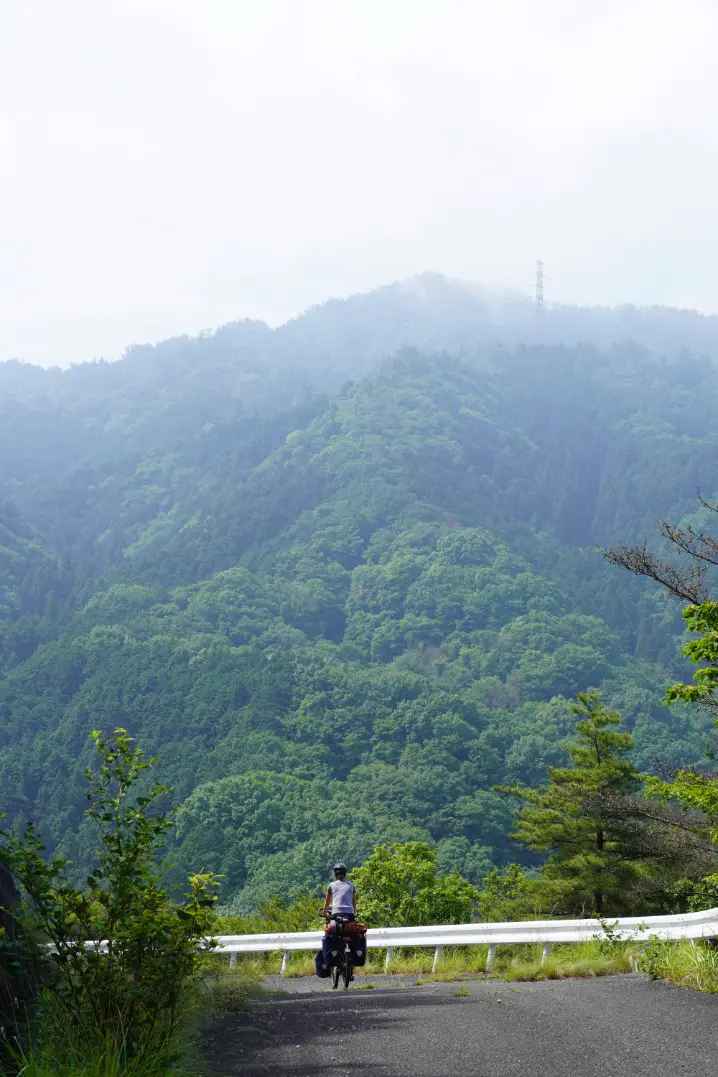
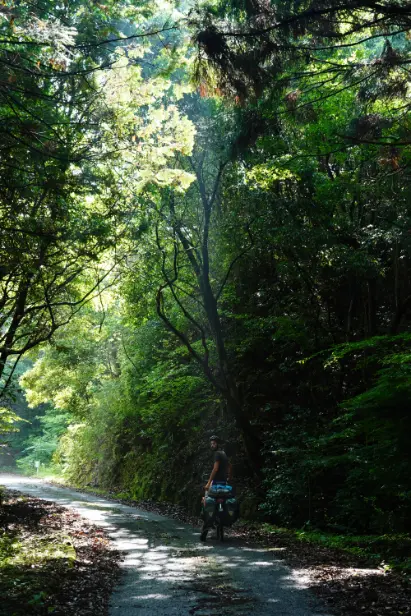
Different Japanese
The vast majority of people here leave us alone. A lot of distance is carefully kept and most people do not speak to us. Shyness? Fear? Politeness? Language barrier?
But not everyone is so aloofly. In that respect we experience many extremes. A few examples:
- At one of the campsites we are on a field that could easily accommodate 100 tents. There is 1 other camper that day. He pitches his tent as far away from us as he possibly can with the entrance facing the other way! He doesn’t says hi while we are doing the dishes, not even a nod. He does his very best to stay out of the way.
When we arrive at a campsite on a rainy Sunday, we don’t feel like setting up our tent in the pouring rain. There is a kitchenette with a hot shower (!) Because it is still early in the day, we decide to first take a nice shower and have a cup of coffee and then see what happens. The lady responsible for the campsite approaches us anxiously. She’s in a hurry. How long do we plan to stay in the kitchen? “Because the kitchen is really only for washing dishes.” she can’t possibly be serious. There is more than 100mm of rain falling, everything we have is soaked and now she wants to send us into that gigantic shower because we are occupying the kitchen? There is not a living soul to be seen on the campsite. What sane person would even want to go camping in this weather? We try to answer in the kindest way possible that we do not intend to leave the dry kitchen and leave little room in our wording for a “no” from her. She nervously agrees. We are allowed to stay in the kitchen until 4:30 PM. Fine.
But at 4:30 PM it is still raining cats and dogs. “I think the rain is a bit less now, go and pitch your tent quickly.” We look doubtful. Ma’am, you can’t be serious. The camping field has now turned into a pond, and there is no way she can get us to put up the tent. Once again we leave little room for discussion in our answer. She reluctantly leaves us in the kitchen again. A little later we notice a pagoda. We can stay nice and dry there. We walk around the campsite in our raincoats, but it has turned into a giant sponge. Every time we put our feet down we push the water out of the earth and we stand in a puddle of water. Setting up our tent here is simply out of the question. But the lady does not give up: “the pagoda is SUPER dangerous”. There are some termites in there so it could collapse at any time. And you never know when an earthquake is coming.
So we have the choice between a huge sponge or a “SUPER dangerous” pagoda where we can stand dry. Then we opt for a dry night. We take the danger for granted. We jump on the stairs a few times and try to push the pagoda over, but it is as solid as a rock.
- During another really heavy shower we are again at a campsite. This time we have already set up our tent, so our things will stay dry anyway. However, the lady at reception comes to warn us. Heavy rain is coming this way, if we want we can put the tent in the building where the kitchen is. It couldn’t be more striking. Where one lady insisted on getting us out of the kitchen and onto the camping field in the pouring rain. This lady comes to warn us just before the rain starts and sends us to the kitchen!
- Another rainy night, morning and afternoon in which more than 200mm of rain falls thanks to a typhoon that rages by off the coast of Japan. We have just come out of the Onsen spotlessly clean and wonderfully warm. It is still drizzling a bit and it is a 2km walk to the campsite, so just to be on the safe side we put on our rain suits. A man walks towards us and in very poor English, but mainly with hands and feet, it becomes clear that he is taking us to the campsite. A truly unique experience in Japan because, as mentioned, most people really leave us alone. When we arrived at the campsite, we thank him very much and go to sleep.
- The next morning we are rudely disturbed from our sleep, it is not yet 6:00 am and someone is shouting at our tent. What kind of crazy person is this? And yes, there is our taxi driver from the day before. “Noodle, noodle, food, eat, eat”. We put on your clothes and go outside. 2 minutes later we are back in the car with him, on the way to a restaurant where he buys breakfast for us. He shows us his company and then takes us back to the campsite. Not all Japanese are that shy, but next time he can wake us up a little later.
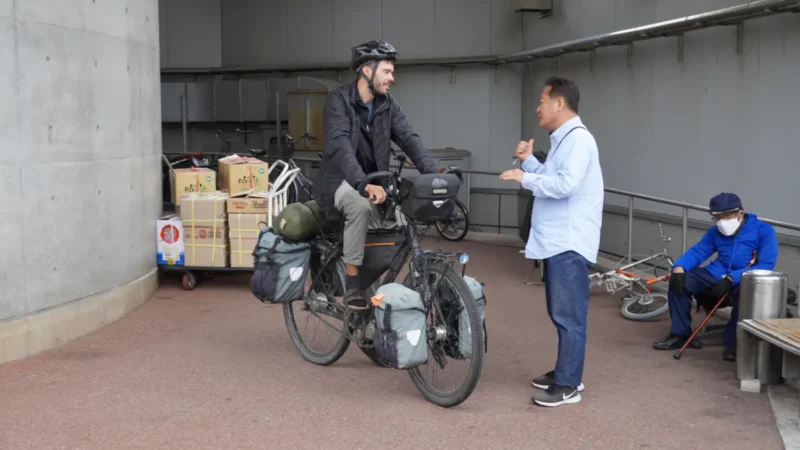
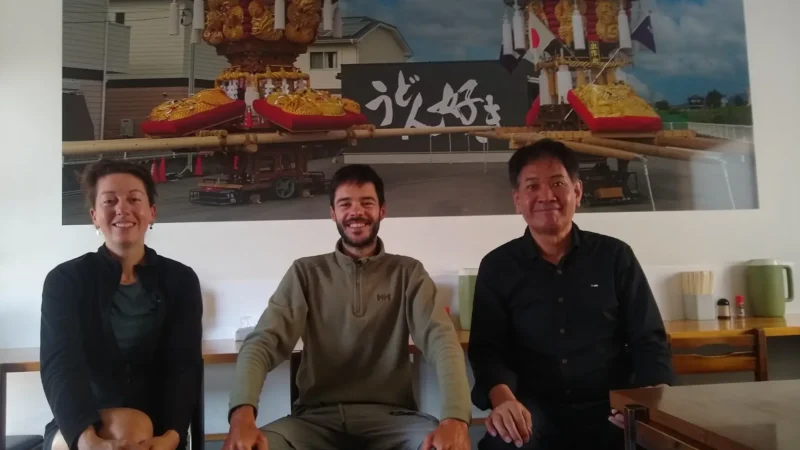
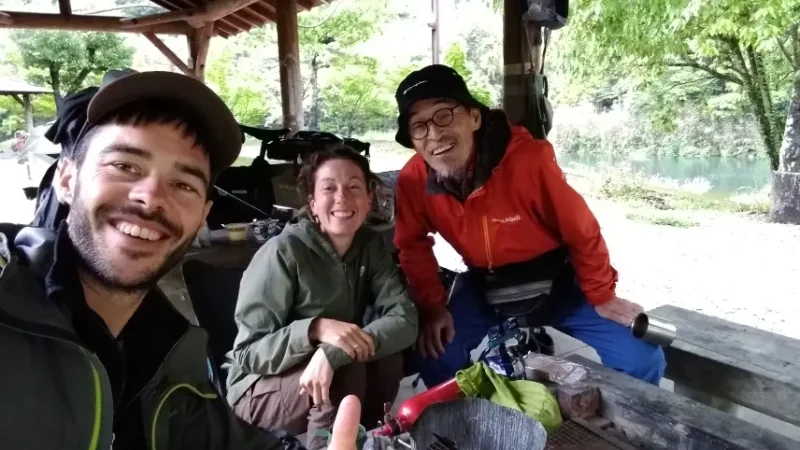
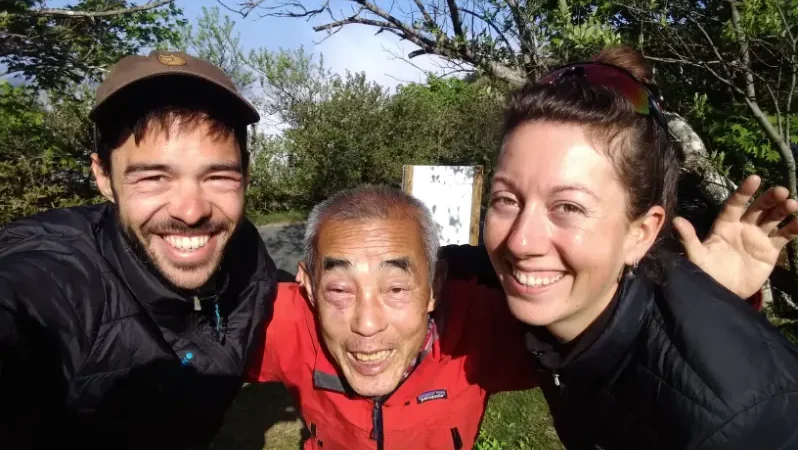

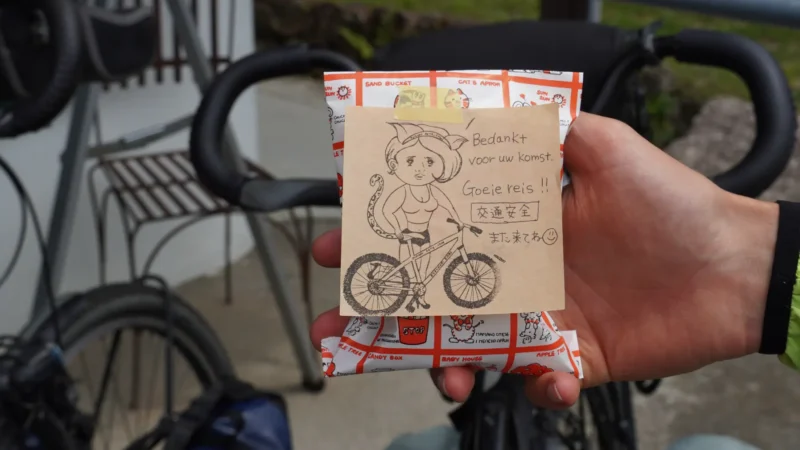
Camping in Japan
Camping is immensely popular in Japan. There are campsites everywhere that are often very cheap, but we usually choose the free campsites. And there are plenty of those too. The Japanese have turned camping into an art and prepare everything down to the smallest detail. The tent is set up perfectly and they have the most useless gadgets. A holder for all pans, which are also neatly hung in a row on the holder. Everything is expandable, foldable or extendable and a holder has been devised for everything. Click a holder for your lamp and a fan on the table. Even the chopsticks come in extendable form. Madness. A campfire is also part of it. A large cardboard box with wood then appears. All wood is sawn to exactly the same length, which you can buy at most supermarkets. The wood is then perfectly stacked on a special fold-out rack, wearing gloves and using tongs. A fire is then made in a folding fire basket and the wood is then lifted from the rack to the fire basket with special large tongs. AgainMadness. Cleaning up the entire perfect setup is always done with gloves on. Work gloves for the fire basket and gas burner, and white gloves for folding the tent. Just imagine having to do that with your bare hands!
Ready to camp? let's go back home.
But when the fire has burned out, the tent is perfectly level, food has been eaten, everything has been washed spotless again, the Japanese are ready for the night. And they spend the night at home! WHAT IS HAPPENING HERE ??!! They spent all afternoon setting up the perfect camping spot. They look like they stepped straight out of an outdoor store brochure. You simply can’t be better prepared. And then, just before it gets dark, just before you actually start camping, they pack everything up and leave! “Day camping” as they call it. Bizarre. Why all that effort? We don’t understand it at all, but we really enjoy the japanese camping scene.
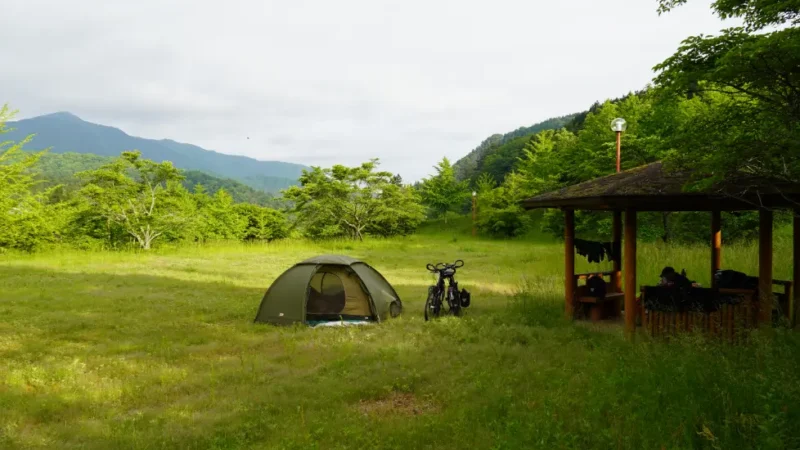
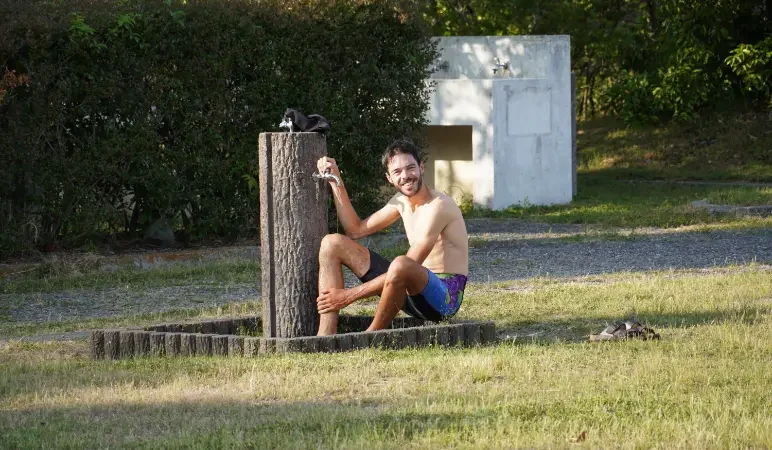


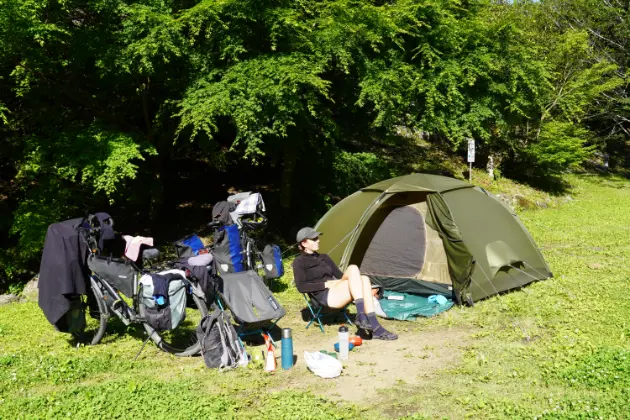
Extra miles
We had agreed in advance with ourselves to just start the pilgrimige and see how it would go. Don’t delay, but certainly don’t rush either. When we’ve visited about 60 temples, we know that we have a few days to spare. We therefore decide to include a popular route called Simanami-Kaido. A number of islands between Shikoku and mainland Japan are connected by bridges and a cycle path has been constructed along it’s entire length. It is indeed a beautiful route because it is so special that all bridges can be cycled, but we expected it to be more beautiful. The route is very popular and we see a lot of people cycling, but we think Shikoku itself is more beautiful than this tour.
UFO line
After the Shimanami-Kaido we cycle on to another extra route: the UFO line. It runs along the highest mountain peak of Shikoku. And that means a lot of climbing again. But as always: worth it! The views and the mountainous surroundings are simply fantastic.
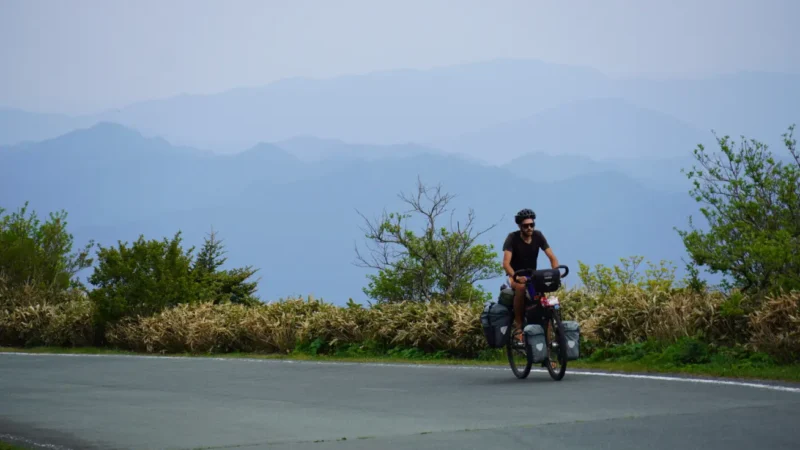
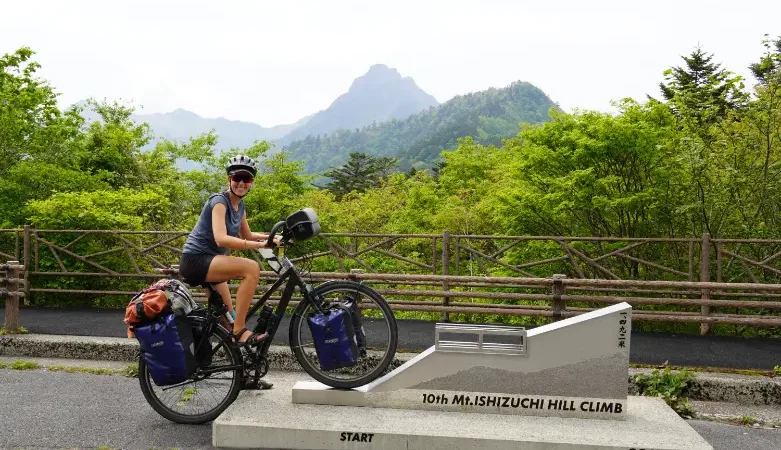
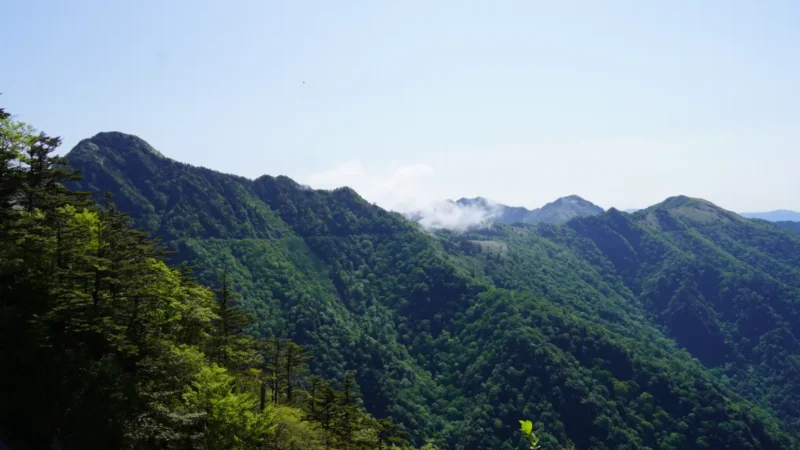
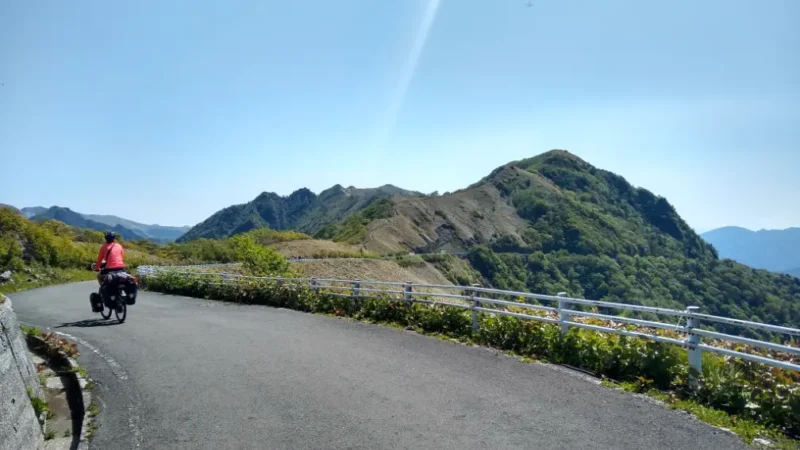
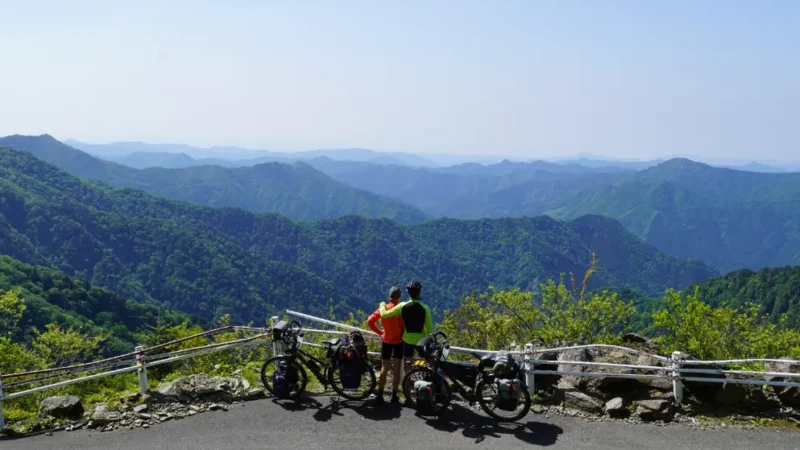
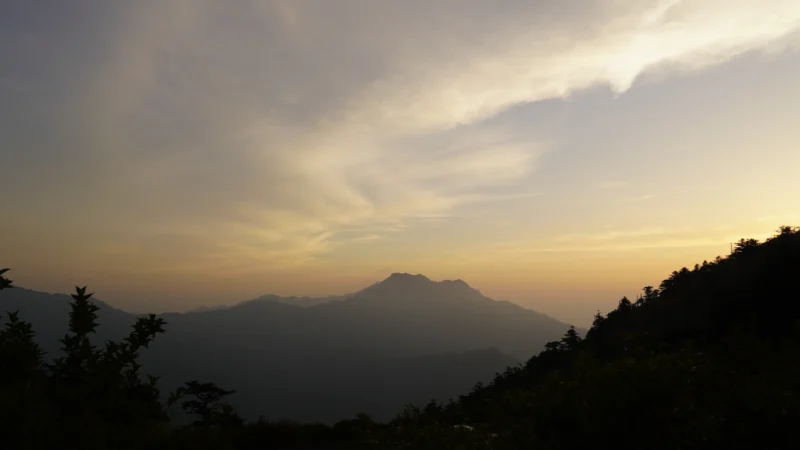
Danger
We feel safe in Japan. But if you believe all the warning signs, it is very dangerous here. Watch out for falling rocks. Beware of fast-flowing water. Watch out for Bees. Be careful of a sharp bend. Watch out for rain. Watch out for snakes on the roadside. Watch out for wild boars. Everywhere you go you are warned of potential danger. Maybe rightly so, but you can exaggerate it. We are warned so often that we no longer take it seriously. The warning signs are also all made in the shape of a cartoon character so that it looks a bit childish.
alarm
However, the air siren goes off once at 11 o’clock in the evening. You don’t just do that, right? Rob sleeps through it, luckily it wakes Isabelle up. Which in itself is a miracle because Rob is usually the one who wakes up from such things. Once Isabelle is asleep you can set off a bomb and she will continue to dream peacefully. But this time it is the other way around. We are located 100m from the sea, somewhere in a park. Tsunami danger? Has there been an earthquake? Isabelle consults her phone.
The air siren has just woken everyone up with the announcement that it is “Extremely dangerous due to dry air” tonight. Dry air? Dangerous? Yes we get it. Dry air, it’s hot: be careful with fire. But that’s not why you turn on the siren, is it? Wouldn’t you only set it off if something was really wrong? Now it feels a bit like a warning before a warning. Be careful: something might catch on fire soon. Just like the warning signs, the siren also loses its effect on us. “It will probably be nothing again.”
Broadcasting
Another Japanese oddity that we find funny. In the smaller villages a public alarm system goes off at least 3 times a day. At 6 o’clock in the morning, at 12 o’clock in the afternoon and at 5:00 p.m. a cheerful tune is played. Sometimes also at random times and then something is announced. It’s like the old days at our camping when the day’s program is announced or how someone’s parents were told that their son/daughter had been found and they could pick them up at reception. “Ding, Ding, Ding Dong tonight is Mr Myata’s birthday, he baked plum cake and everyone can come and taste a piece. Ding, Ding, Ding, Dong”. We translated it once via an app and then it was announced that there was a festive event tomorrow and that you should bring your neighbors and friends.
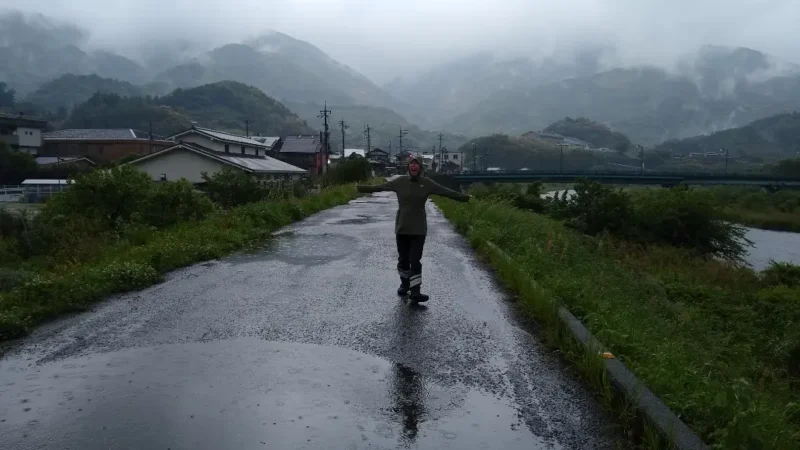
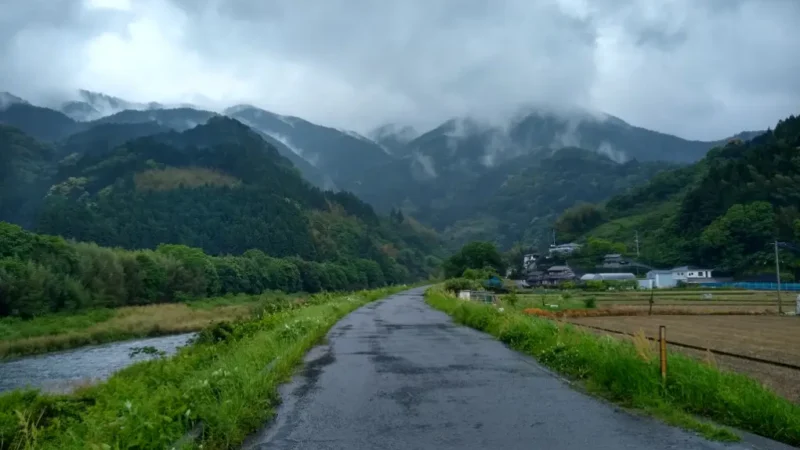
The end is near
We enjoy all the Japanese quirks. Because you simply cannot call it negative. It shows us a piece of Japanese culture that we would not have experienced without the bike. And before we know it, we start our last kilometers. The last 20 temples are very close together and on the second penultimate day we collect 11 stamps. Just a bit too much of a good thing actually. The last month we have not become noticeably closer to Buddhism, we have not become more spiritual and in the last two days we have actually had enough off the temples. Temple 81, 82, 84, 85 and 88 are all on a hill, so these are three tough last days. But now we want to complete that book! And once we’re on the bike, things just go very well. Enjoy it while you still can is the advice from home. You’ll be home soon. We really hope that we can continue to enjoy ourselves at home. In any case, that will be the goal. Because why wouldn’t it be possible?
Just 3 more nights in our tent
We spend the last 3 nights in our tent in the same place where we started our trip. That seemed appropriate to us. It is a beautiful free campsite on a dam between the mountains. A perfect place to enjoy camping for a while. On June 4 we cycle back to the harbor and from then on we take the boat back to the mainland. We booked a hotel close to Osaka airport. Our flight isn’t until June 12, so we have plenty of time to finalize a number of things. And then our next adventure can begin. The bicycle will no longer be our primary means of existence, but will continue to be part of our lives anyway. Because how FANTASTIC it is to travel around the world by bike!

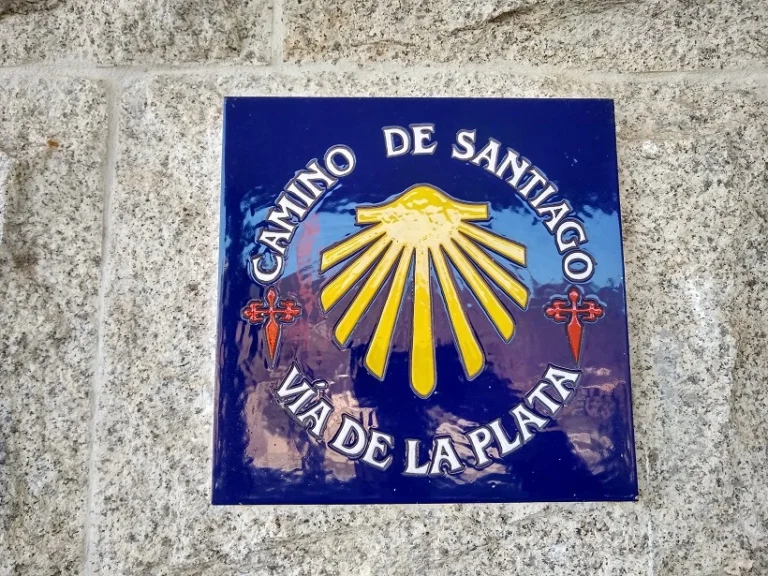
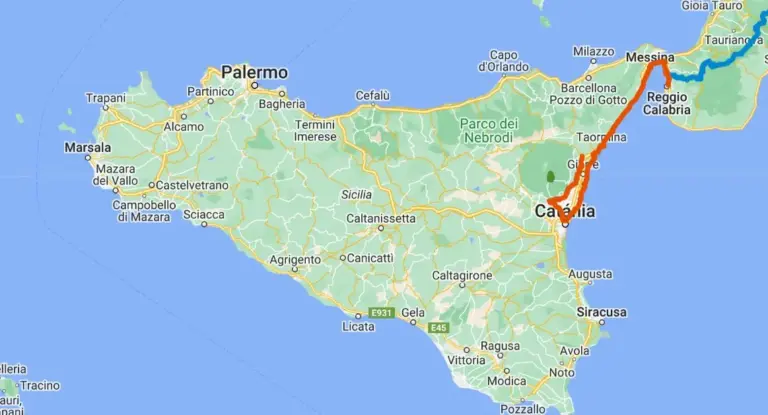
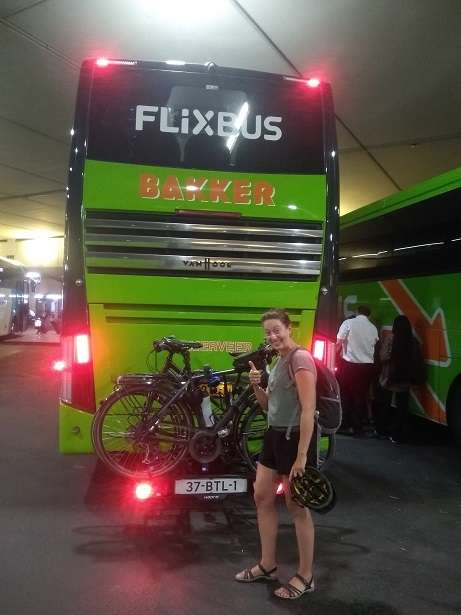
Thank you so much!!
Again a fantastic report from faaaar away, very close to your coming home to NL. Thanks once more for your reports and have a great time those last days and of course a safe journey home!